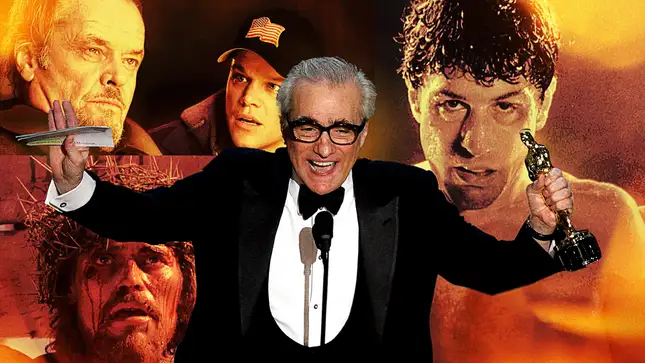Martin Scorsese, a titan of cinema, has not only carved a niche for himself in the realm of filmmaking but has also amassed a fortune reflective of his illustrious career. Graduating with a Master of Arts from New York University in 1968, Scorsese made an early mark with his debut, “Who’s That Knocking at My Door,” heralding the arrival of a distinct voice in cinema.
RELATED: Who is Conan Gray? Everything You Need To Know
Table of Contents
Martin Scorsese Net Worth
Martin Scorsese is an American director, writer, and producer who has a net worth of $200 million. Martin Scorsese is widely regarded as one of the greatest living American filmmakers. Scorsese’s notable films include “The Irishman,” “The Wolf of Wall Street,” “The Departed,” “Aviator,” “Gangs of New York,” “Casino,” “Goodfellas” and “Raging Bull.” He won the 2007 Academy Award for Best Directing in 2007 for “The Departed.” As of this writing, Martin Scorsese’s films have grossed more than $2 billion at the worldwide box office.
Who is Martin Scorsese?
Martin Charles Scorsese, born November 17, 1942, is a seminal figure in American cinema, celebrated for his influential contributions to the New Hollywood era. His illustrious career has been adorned with numerous awards, including an Academy Award, Grammy, and multiple BAFTAs, Emmys, and Golden Globes, underscoring his versatility and mastery in filmmaking.
Scorsese’s impact on the film industry has been recognized through prestigious honors such as the AFI Life Achievement Award and the Cecil B. DeMille Award, along with a Kennedy Center Honor and a BAFTA Fellowship, marking his enduring legacy. Moreover, five of Scorsese’s works have been acknowledged for their significance by being inducted into the National Film Registry, a testament to their cultural, historical, and aesthetic importance. Through his visionary storytelling and dynamic directorial style, Scorsese has cemented his status as an iconic filmmaker whose work continues to inspire and resonate.
Early life and education
Martin Scorsese’s early life in New York City’s Little Italy and his upbringing in a Catholic environment played a pivotal role in shaping his cinematic vision. Born to parents working in the Garment District, Scorsese’s health issues as a child led to a profound engagement with cinema, fostering a passion that would define his career. His adolescence was marked by a fascination with film, notably the works of Powell and Pressburger, and a burgeoning interest in neorealism and historical epics, which influenced his depiction of Sicilian heritage and storytelling style.
Scorsese’s path veered towards filmmaking, culminating in a B.A. in English from NYU’s Washington Square College and an MA from its School of Education. This educational journey, enriched by a diverse array of cinematic influences—from the French New Wave to Satyajit Ray and Ingmar Bergman—laid the groundwork for Scorsese’s illustrious career in film.
Career
Martin Scorsese’s transition from aspiring priest to iconic filmmaker began in his formative years at Cardinal Hayes High School and a brief stint at a seminary, a path that shifted dramatically when he pursued higher education in English at New York University’s Washington Square College.
His academic journey didn’t stop with a Bachelor of Arts degree; Scorsese further honed his craft by obtaining an M.F.A. in film from NYU’s School of the Arts, a period during which he created notable short films like “What’s a Nice Girl Like You Doing in a Place Like This?” and “The Big Shave.” These early projects showcased his burgeoning talent and set the stage for his debut feature film, “Who’s That Knocking at My Door,” a collaboration with Harvey Keitel and Thelma Schoonmaker, marking the inception of Scorsese’s illustrious career in cinema.
Personal Life
Martin Scorsese’s personal life is as multifaceted as his career in filmmaking, marked by a series of marriages that reflect different chapters of his life. Beginning with Laraine Marie Brennan in 1965 and leading to his current marriage to Helen Schermerhorn Morris in 1999, Scorsese has navigated the complexities of relationships alongside his cinematic journey.
Each marriage has contributed to his narrative, from his first union with Brennan, yielding a daughter, through his brief marriage to Julia Cameron, which also brought a daughter into his life. His subsequent marriages to Isabella Rossellini and Barbara De Fina further shaped his experiences before finding a lasting partnership with Morris, with whom he shares another daughter. Scorsese’s relationships, much like his films, tell a story of evolving chapters, each with its distinct significance in his life’s narrative.
What is considered Martin Scorsese’s best movie?
Martin Scorsese, a titan of American cinema, has consistently redefined the landscape of filmmaking from the 1970s through each successive decade, leaving a legacy difficult to distill into a single defining masterpiece. However, “Raging Bull” (1980) stands out not only as a pivotal work of the 1980s but also as a watershed moment in Scorsese’s career, earning Robert De Niro an Oscar and showcasing Scorsese’s unparalleled ability to blend gritty realism with profound storytelling.
Yet, Scorsese’s versatility shines across genres, from the darkly comedic “The King of Comedy” to the epic mob drama “Goodfellas,” a quintessential 90s film that further cemented his status. The 2000s saw Scorsese revitalizing his directorial vision through collaborations with Leonardo DiCaprio, culminating in the critically acclaimed “The Departed,” which finally won him the Best Director Oscar.
Into the 2010s, “The Irishman” emerged as a late-career highlight, a sprawling epic that reunites iconic actors under Scorsese’s meticulous direction, proving his undiminished prowess and the enduring impact of his films on the cinematic canon.
How many movies does Martin Scorsese have?
Martin Scorsese, a luminary in the realm of cinema, boasts an extensive filmography that spans over half a century, reflecting his profound impact on the industry. His directorial portfolio includes twenty-seven feature films, seventeen documentaries, and a co-directed anthology film, showcasing his versatility and mastery across genres. Notable for seminal works such as “Taxi Driver,” “Raging Bull,” and “Goodfellas,” Scorsese has become synonymous with cinematic excellence.

Graphic: Karl Gustafson
His films, which have been inducted into the National Film Registry for their cultural, historical, or aesthetic significance, underscore his enduring legacy. Beyond his narrative and documentary endeavors, Scorsese’s contributions extend to television, music videos, and even acting, illustrating a comprehensive engagement with storytelling and film preservation that has solidified his status as one of the greatest living American filmmakers.
Which actor has worked with Scorsese the most?
Martin Scorsese, throughout his illustrious filmmaking career, has forged significant partnerships with a host of actors, bringing to life cinematic masterpieces that have left an indelible mark on the landscape of American cinema. At the forefront of these collaborations is Robert De Niro, with whom Scorsese has created ten films, starting with “Mean Streets” in 1973 and extending to “Killers of the Flower Moon” in 2023.
Following closely is Leonardo DiCaprio, Scorsese’s more recent muse, with whom he has crafted six films since their first collaboration on “Gangs of New York” in 2002. Harvey Keitel, Scorsese’s earliest acting muse, has appeared in six of his films, showcasing the depth and versatility of Scorsese’s collaborative spirit. Joe Pesci and Harry Northup have each contributed to four Scorsese films, adding unique flavors to the director’s expansive body of work. These collaborations underline Scorsese’s ability to cultivate enduring relationships with actors who deeply understand and enhance his cinematic vision.
Who influenced Martin Scorsese?
Martin Scorsese, a seminal figure in filmmaking, has openly acknowledged the profound impact Satyajit Ray’s “Pather Panchali” (1955) had on his understanding and appreciation of cinema. This masterpiece not only introduced Scorsese to the intricacies of Indian culture but also broadened his perspective on storytelling within the context of a colonized world.
While Jean Renoir’s “The River” (1951) initially piqued his interest in Indian settings and narratives, it was Ray’s portrayal of life through an indigenous lens in “Pather Panchali” that became a pivotal influence, offering Scorsese a new dimension of cinematic expression and empathy towards the colonized experience. This revelation highlights the transcultural inspirations that shape Scorsese’s directorial endeavors, demonstrating the universal power of film to bridge disparate worlds.
Conclusion
Martin Scorsese’s journey from a young boy with a passion for cinema to one of the most revered directors in Hollywood is a source of inspiration. His impressive net worth is not just a reflection of his financial success but also of his unparalleled contribution to the art of filmmaking.
RELATED: Who is Joseph Quinn? Everything About The British Actor
FAQs about Martin Scorsese
- How did Martin Scorsese accumulate his wealth?
- Scorsese’s wealth primarily comes from his career as a director, writer, and producer in the film industry, alongside various endorsements and public appearances.
- Has Scorsese’s net worth been affected by his film choices?
- While some of his films were not major commercial successes, Scorsese’s reputation and influence in the film industry have consistently contributed to his net worth.
- Does Martin Scorsese invest in other ventures outside of filmmaking?
- While primarily focused on filmmaking, Scorsese is also involved in various educational and film preservation initiatives.
- How does Scorsese’s net worth compare to other contemporary directors?
- While not the richest, Scorsese’s net worth is among the highest in the industry, reflecting his success and legacy.
- What impact has Scorsese’s career had on his net worth?
- Scorsese’s career, spanning several decades with numerous box office hits and award-winning films, has been a major factor in his significant net worth.













